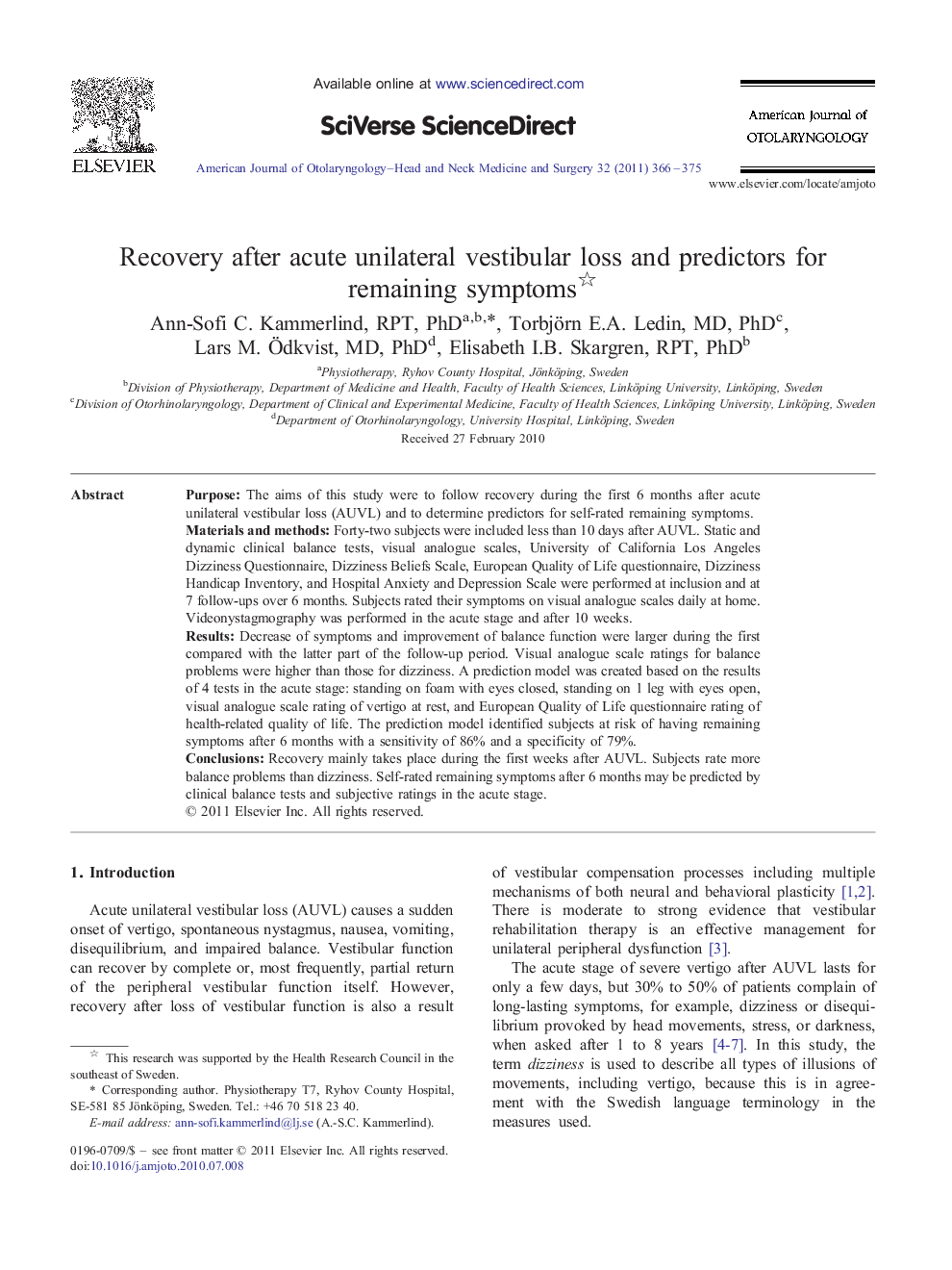| Article ID | Journal | Published Year | Pages | File Type |
|---|---|---|---|---|
| 4103456 | American Journal of Otolaryngology | 2011 | 10 Pages |
PurposeThe aims of this study were to follow recovery during the first 6 months after acute unilateral vestibular loss (AUVL) and to determine predictors for self-rated remaining symptoms.Materials and methodsForty-two subjects were included less than 10 days after AUVL. Static and dynamic clinical balance tests, visual analogue scales, University of California Los Angeles Dizziness Questionnaire, Dizziness Beliefs Scale, European Quality of Life questionnaire, Dizziness Handicap Inventory, and Hospital Anxiety and Depression Scale were performed at inclusion and at 7 follow-ups over 6 months. Subjects rated their symptoms on visual analogue scales daily at home. Videonystagmography was performed in the acute stage and after 10 weeks.ResultsDecrease of symptoms and improvement of balance function were larger during the first compared with the latter part of the follow-up period. Visual analogue scale ratings for balance problems were higher than those for dizziness. A prediction model was created based on the results of 4 tests in the acute stage: standing on foam with eyes closed, standing on 1 leg with eyes open, visual analogue scale rating of vertigo at rest, and European Quality of Life questionnaire rating of health-related quality of life. The prediction model identified subjects at risk of having remaining symptoms after 6 months with a sensitivity of 86% and a specificity of 79%.ConclusionsRecovery mainly takes place during the first weeks after AUVL. Subjects rate more balance problems than dizziness. Self-rated remaining symptoms after 6 months may be predicted by clinical balance tests and subjective ratings in the acute stage.
